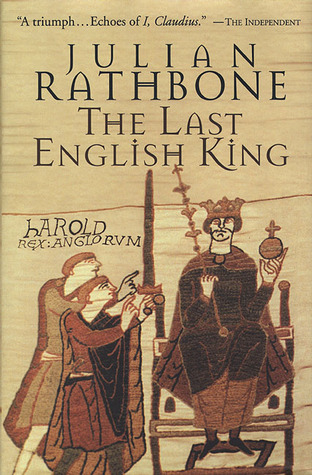Harold's father Godwin was Sussex thegn of some, but not great importance in the time Ethelred the Unready, Godwin readily adapted to the conquest of the Dane King Cnut in 1016. By the time of Cnut's death in 1035, Godwin had become the powerful Earl of Wessex. After brief reigns by two of Cnut's sons, the earls of England invited Ethelred's son Edward back from exile in Normandy to reign as king in 1042. Edward chafed under Godwin's attempts to control him, and a dispute in 1051 led to the entire family's banishment from the kingdom.
Harold, the second son of Godwin was born in 1022, and already and earl in his own right at the time of his family's banishment in 1051. He went to Ireland, where he had friends and allies, which the Godwin's used to force their restoration the following year.
Following his father's death in 1053, Harold took on his role as the wielder of real power in England. As leader of the king's army, in 1062 and 1063 he decisively dealt with Welsh raiders by boldly marching into the Welsh lands. Such was the pressure he placed on the Welsh, that Gruffud's own allies killed him and sent his head to Harold. Less understood is the trip that he made to Normandy in either 1064 or 1065 (the sources are in dispute). Either by intention or accident a boat bearing Harold landed in Normandy and Harold became the unwilling guest of the Duke for a few months. Harold's Normandy visit ended with a much debated incident in which the English earl swore fealty to William, supposedly upon some holy relics.
However, Harold was probably the most capable ruler of all the claimants to the English throne. He was literate and had progressive tendencies. He put good governance ahead of family when the northern part of the realm rebelled against his brother Tostig's misrule. He was well traveled and had diplomatic links as far as Rome and Russia. As a commander, he defeated a variety of opponents including Norse, Welsh, and Bretons, sometimes in their own territory. But a string of victories cannot make up for one staggering loss. After holding together a larger, but tired and less disciplined army, against the Normans on the 12th of September 1066, Harold was felled in battle and his army routed.
Modelling Harold Godwinson
From the Bayeux Tapestry to later artistic representations, Harold is almost always represented as a physically impressive man, with brown hair and a mustache. Gripping Beast and Crusader Miniatures both produce figures for Harold that adhere to this tradition. The two shots below are Crusader's Harold, based along with an axe bearing housecarl from Conquest Games.
Gripping Beast sells a pack of Harold with his brothers Gyrth and Leofwine, all three of whom were killed at Hastings. This is the promo pic, which looks like a nice purchase.
Harold in Non-Fiction and Historical Fiction
The previously recommended Last English King by Julian Rathbone is excellent, especially if one is looking for something a little more post-modern than straightforward action-adventure historical fiction. Set in 1070, it concerns a Frisian monk named Quint and his wanderings across Asia Minor with a crippled survivor of Hastings named Walt. Quint slowly pries the story of Harold from Walt, and my favorite exchange between the two is this account of the battle:
'A fighting man should stand on his own two feet and exchange blows with his adversary until one or other drops. Besides, good horses are valuable, and can get killed in battle. I saw three die between William the Bastard's thighs on Senlac Hill. I could scare afford one horse, let alone three.'
'But...'
'If you are going to say they won because they fought from horses, forget it.'
His face was suddenly suffused with angry blood again and Quint wisely chose not to pursue the subject.
If one wants to get an impression of the high regard that Victorian English held for Harold, a good place to look is G.A. Henty. A tremendously popular Victorian writer, he is not well known today. That is a shame because Wulf the Saxon is an example of the "boy's own" genre that holds up to this day. Like the previous book, the main character is a young Saxon, Wulf in this case, who has a fly on the wall perspective on the events leading up to Hastings and the aftermath. As an added bonus, a free audio version is available at the public domain repository Librivox.
Most of my research on Harold comes from Harold: The Last Anglo-Saxon King by Ian W. Walker. It is a rare modern biography of Harold, and generous to his legacy. Walker nicely balances the difference between a scholarly work and a popular history.



I started reading Wulf the Saxon a while back. Thanks for the Audio Book link. That is very welcome.
ReplyDeleteLovely work on Harold's coat. Dean
ReplyDelete